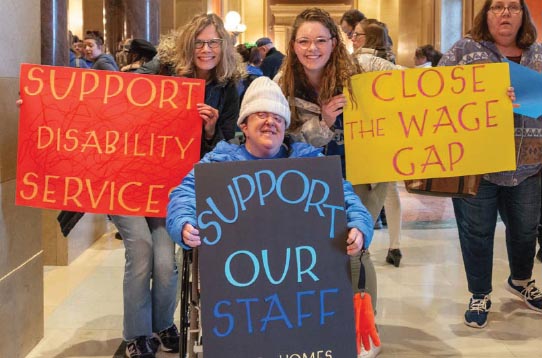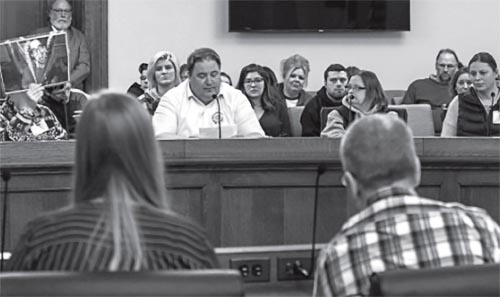2019: Increasing staff wages is a focus at the state capitol
Access Press
5/10/2019 by Access Press Staff
Efforts to address direct support provider wages continue as the Minnesota Legislature nears the end of the 2019 session. As May began, both the House and Senate had passed health and human services omnibus bills. Each bill passed with a "competitive workforce factor" to address staff wages.
The 2019 session is slated to end May 20, 2019. By the time Access Press went to press, legislative leaders and Gov. Tim Walz were to have reached agreement on their fiscal targets. Those targets then went back to conference committee chairs. The targets guide what is and isn't poised for adoption this session.
A second deadline is May 13, 2019 when conference committees are supposed to have completed their work and submitted reports to their house of origin.
With the conference committee process underway, no one is taking anything for granted. What ends up in the final omnibus bill will have a great impact on thousands of Minnesotans who rely on support staff. The House and Senate bills went into conference committee with major differences, and how those will be worked out is an open question.

People with disabilities and their allies rallied at the Capitol this session.
Several advocacy groups have launched email and phone campaigns to keep the competitive workforce factor in the final bill. They are urging Minnesotans with disabilities, their family members and allies to make the case for the measure.
Current data shows wages for disability services DSPs fall 17 percent behind wages of jobs with similar training and education requirements. One sample email calls the state's healthcare workforce situation "bleak," due to very high rates of vacancies, turnover and overtime. The competitive workforce factor is an important step in bridging that wage gap and the workforce crisis.
The House includes $34 million to increase pay for workers who care for people living with disabilities, along with $37 million for the union contract to support personal care attendants or PCAs. The Senate includes $4 million for workers and nothing for the union. Some analyses of the bills indicate that the Senate bill would actually reduce spending on PCAs by limiting the number of people and conditions that would qualify for PCA help.

ARRM members were active at the Capitol this session.
It increases the PCA eligibility threshold to one critical activity of daily living or a behavior that "increases vulnerability" and requires intervention at least four times per week. That is seen as making it more difficult to quality for services.
Disability advocates have spent hours poring over the bills, and many groups have published summaries. What also is noted is the difference in health and human services spending proposal, with House members lining up behind Walz' budget proposal and the Senate looking to limit costs. Senate leadership has questions about the long-term sustainability of some of Walz's centerpiece OneCare Minnesota proposals, including those centered on a prescription drug benefit and a 20 percent premium discount for Minnesotans who buy health insurance via private plans on the individual market. One big difference cited in the bills is how the House and Senate address the looming sunset of the 2 percent provider tax that supports the state's Health Care Access Fund.


